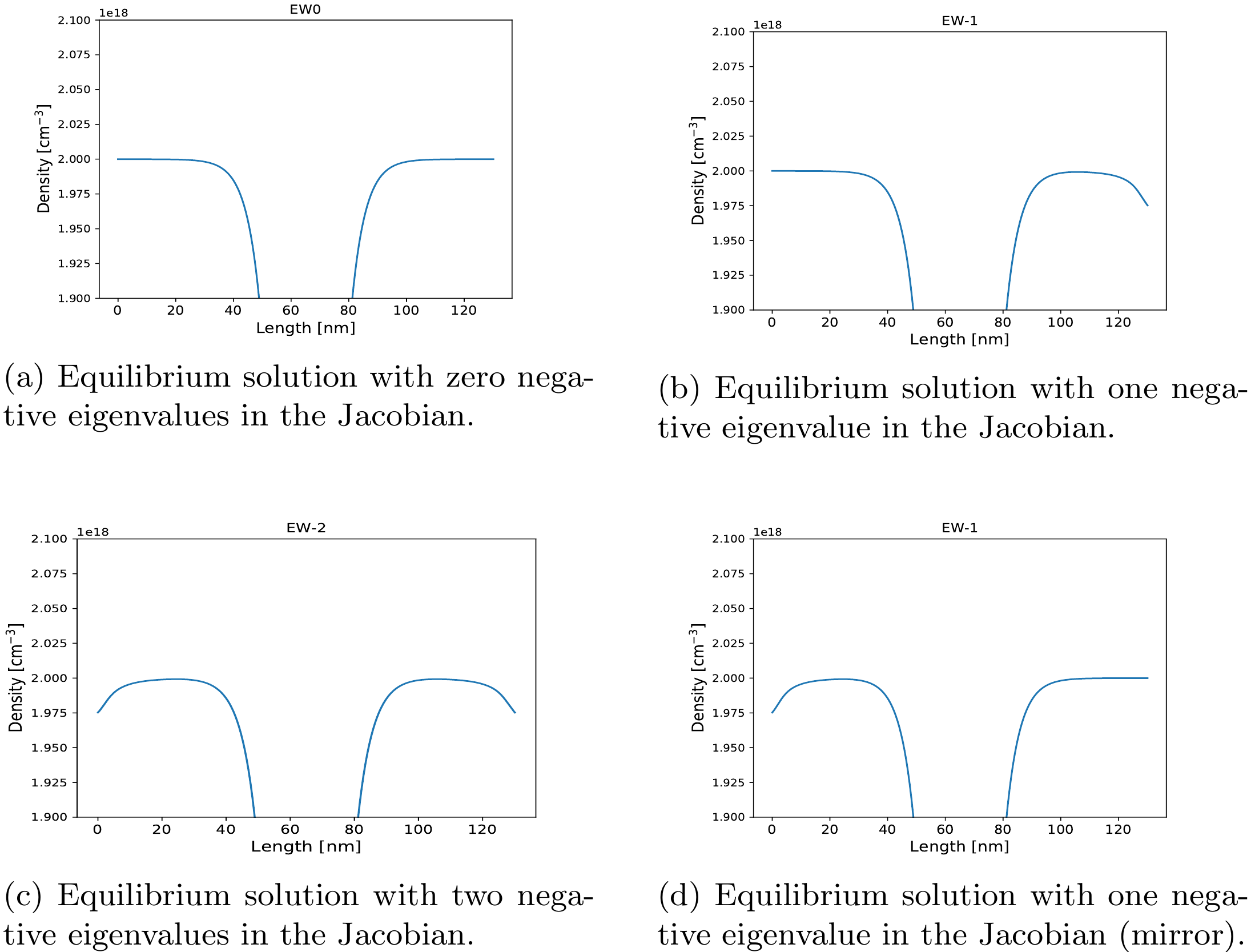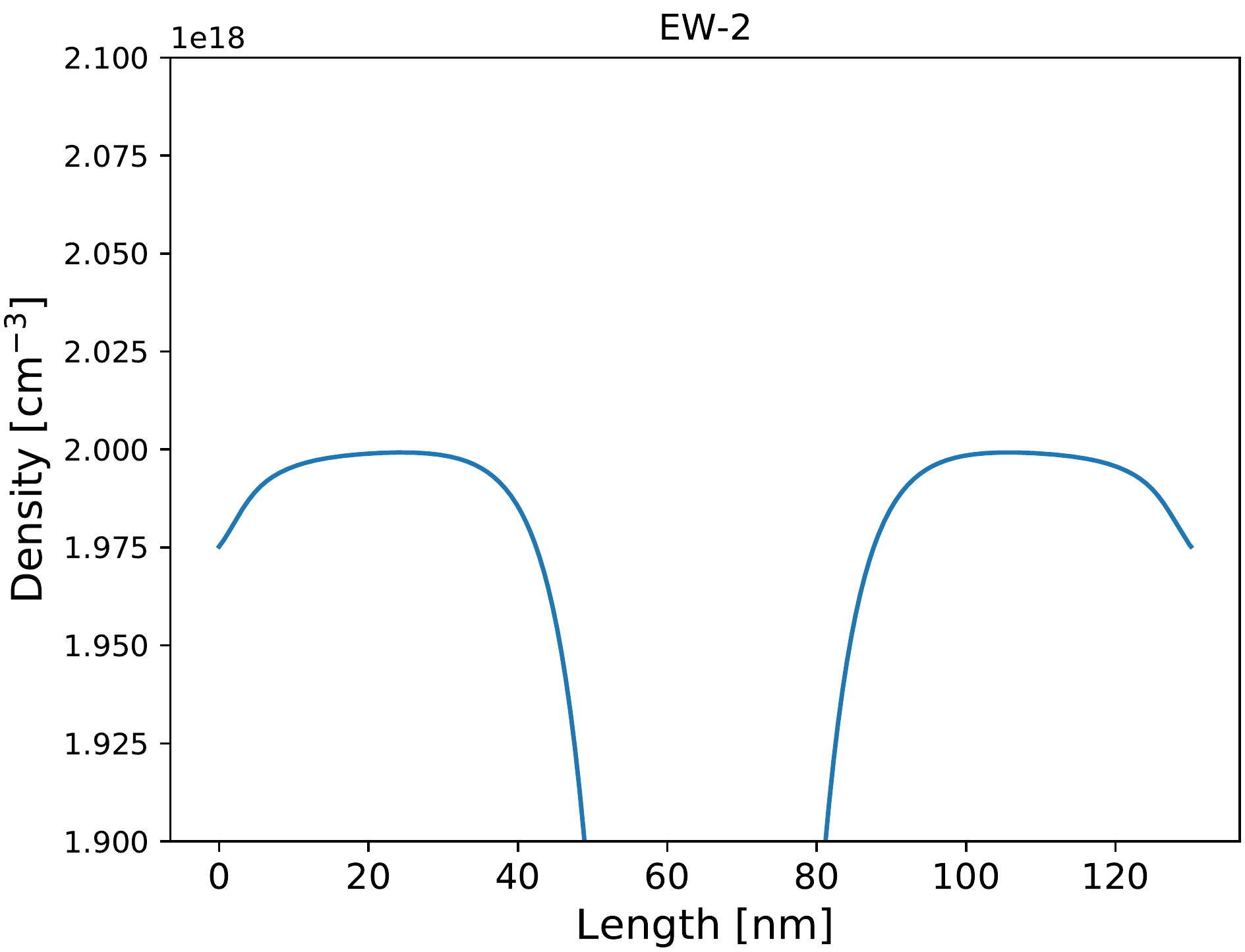 |
|
||||
BiographyRobert Kosik was born in Eisenstadt, Austria, in 1969. He studied technical mathematics at the Technische Universität Wien, where he received the degree of Diplomingenieur in 1996. In 1998 he joined the Institute for Microelectronics at the Technische Universität Wien and received his PhD degree in 2004. His scientific interests include partial differential equations for transport modeling and data analysis in reliability. |
|||||
Exploring the Global Structure of the Solution Space for a Simple Schrödinger-Poisson Model
Quantum electron transport in nanostructures can be described by a coupled Schrödinger-Poisson system. For the simulation of current-voltage (IV) characteristics, we need to solve the stationary system self-consistently with the applied voltage as a varying parameter, which presents a continuity problem.
We consider one-dimensional electron quantum transport through a structure embedded between two electrodes. In our model, particles are injected from the left and the right boundaries into the electrodes with a Fermi-Dirac distribution, whose parameters are calculated from the doping of the electrodes and the condition of charge neutrality at equilibrium (bulk at zero bias). The incoming waves are assumed to be plane waves, as in the quantum transmitting boundary method. This simple model was introduced by Frensley in the context of Wigner function simulations.
For the solution of the nonlinear system, we use bias-stepping, combined with a full Newton method. The k-grid representing the injected Schrödinger modes is refined adaptively. Parallelization is employed for the assembly of the Jacobian. In general, the solution to a nonlinear system need not be unique. We monitor the number of negative eigenvalues in the Jacobian in order to detect path switching during bias-stepping.
As a test case, we simulate nin-structures which consist of constantly doped n-type electrodes with an undoped (intrinsic) region in the center of the simulation domain. In the selected example, the electrode doping is 2×1018 cm-3. The length of the simulation domain is 130 nm and the width of the undoped region is 10 nm. The material is GaAs at a temperature of 300 K.
For this example, we find four different equilibrium solutions. These solutions are not independent, but rather lie on four solution segments, connected through bifurcation points. These are found by bias-stepping until running into a bifurcation point and then stepping (in the reverse direction) on the emerging second path until running into a bifurcation point again and so on (going full circle).
The four solutions exhibit different effects near the boundary. The density distributions are depicted in the figures. Two of the solutions are symmetric, with zero (see Fig. 1) and two (see Fig. 3) negative eigenvalues in the Jacobian, respectively. One unsymmetric solution (with one negative eigenvalue in the Jacobian) is shown in Fig. 2, while its mirror image is also a solution.
The selected simulation examples numerically demonstrate that the solution to the Schrödinger-Poisson model at a fixed bias is in general not unique and the global solution structure of the continuation problem is non-trivial.

Fig. 1: Equilibrium solution with zero negative eigenvalues in the Jacobian.

Fig. 2: Equilibrium solution with one negative eigenvalue in the Jacobian. The mirror image is also a solution.

Fig. 3: Equilibrium solution with two negative eigenvalues in the Jacobian.


